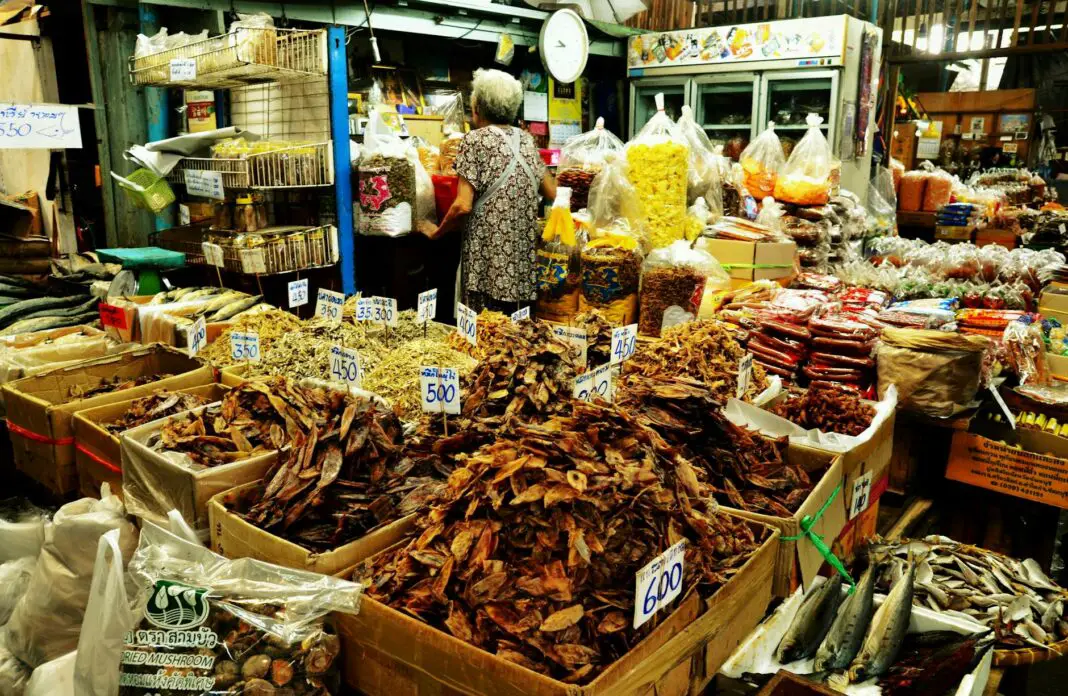Embarking on a trip to Thailand is a dream for many, and with its stunning landscapes, rich culture, and vibrant markets, it’s easy to see why. Among these markets, the bustling bazaars and street stalls are a key attraction, filled with enticing goods just waiting for you to explore. However, as you navigate through this captivating experience, have you ever wondered if you might be overpaying in these vibrant bargaining markets? This guide delves deep into Thailand’s unique shopping culture and equips you with essential strategies to become a savvy shopper who avoids the pitfalls of overpricing.
As you journey through this blog, you will uncover valuable insights that challenge conventional perceptions of market shopping in Thailand. We’ll guide you through the art of negotiation, highlighting tips and tricks to ensure you get the best value for your hard-earned money. You’re about to discover a side of Thailand you never knew—a place where smart shopping and local culture intertwine seamlessly.
Table of Contents
- Understanding Thailand’s Markets
- The Importance of Bargaining
- Top Strategies for Effective Bargaining
- Common Mistakes to Avoid
- Gaining Local Insights
- Maximizing Your Experience in Thailand’s Markets
- Frequently Asked Questions
Understanding Thailand’s Markets
To fully appreciate the essence of shopping in Thailand, it’s crucial to first understand the landscape of its markets. The vibrant marketplaces, filled with a colorful array of goods, from handcrafted souvenirs to tantalizing street food, create an atmosphere that is both lively and inviting. Visitors flock to these markets not just for the shopping experience but to soak in the rich tapestry of local culture and tradition. Many of the goods are crafted by artisans, giving shoppers a unique chance to engage with the creators and learn their stories.
Moreover, different regions in Thailand offer distinct market experiences. For instance, the famous floating markets of Damnoen Saduak present an incredible view of boats brimming with local produce and crafts, while the night markets of Chiang Mai come alive with an array of street food and handmade goods. By immersing yourself in these environments, you not only get to shop but also savor the true essence of Thailand, making these experiences genuinely unforgettable.
The Importance of Bargaining
Bargaining is not merely a skill but a revered art form in Thailand’s markets. For many locals, it is a way of life, representing a cultural practice that spans generations. Engaging in negotiation is an expected part of the shopping experience, so much so that it is often seen as a sign of respect towards both the seller and the goods. Understanding this cultural norm can significantly enhance your shopping experience and help you avoid the trap of overpaying.
Moreover, the thrill of haggling can add an exciting layer to your visit. Picture yourself in a bustling market, navigating through stalls, while practicing your bargaining techniques. Not only does it improve your shopping outcome, but it also creates a connection with local vendors as you negotiate a fair price together. Embracing bargaining fosters a sense of community and understanding, showcasing that shopping in Thailand is about more than just the transaction; it’s an opportunity to engage with the culture.
Top Strategies for Effective Bargaining
Now that you acknowledge the significance of bargaining, let’s dive into actionable strategies that will empower you to negotiate like a pro. First and foremost, always adopt a friendly demeanor. A smile can work wonders and set the tone for a positive interaction. Approach the seller with respect, and start with a polite inquiry about the item you wish to purchase. Knowing some local phrases can further endear you to the seller.
Another effective technique is to be informed about the usual prices of items you are interested in. Doing a bit of research before your trip can go a long way in ensuring you strike a fair deal. Additionally, don’t be afraid to walk away if the initial price seems steep—this tactic can often prompt sellers to reconsider their offer, leading to a much better deal. Lastly, remember to stay patient and vibrant; a rushed approach rarely yields favorable outcomes. Embrace the process, and enjoy each bargaining interaction as a part of your Thailand adventure.
Common Mistakes to Avoid
Many travelers fall into the trap of leaving money on the table, and there are several common mistakes you can avoid to ensure you’re getting the best deals. One prevalent error is not fully engaging in the bargaining process. Accepting the first price can lead you to overpay significantly. Market sellers often inflate their prices, expecting you to negotiate.
Another frequent misstep is showing too much excitement for a specific item. This eagerness can inadvertently signal to sellers that you’re willing to pay more. Instead, maintain an air of indifference to display that you’re considering multiple options. Furthermore, avoid bargaining for every single item in a market; focus on significant purchases where the price difference matters. Lastly, shopping without determining a budget can lead to a scenario where you end up spending beyond your means without realizing it. A well-planned approach ensures that you enjoy shopping while keeping your finances intact.
Gaining Local Insights
To truly elevate your bargaining game in Thailand’s markets, gaining insight from locals is invaluable. Engaging with local shoppers or fellow travelers can provide tips and tricks that might not be widely known. Additionally, following local social media profiles or blogs focused on Thai markets can offer real-time updates on popular items and pricing trends. If you have the chance, join a local tour that focuses on market exploring; not only will you learn the nuances of bargaining, but you’ll also have the advantage of local knowledge that ensures you’re not overpaying.
Understanding cultural nuances is equally essential. Each market has its own rhythm, and being aware of peak shopping times can provide a competitive edge. Visiting during less busy hours may yield more favorable prices, as sellers might be more willing to negotiate when they’re not overwhelmed. The more familiar you become with the local environment, the more confidently you can navigate the bargaining landscape.
Maximizing Your Experience in Thailand’s Markets
Your adventure in Thailand’s bargaining markets doesn’t just come down to shopping; it’s about curating an authentic experience that enriches your journey. By applying the strategies discussed, you can skillfully maneuver through purchasing options while simultaneously enriching your understanding of Thai culture. The joy of exploring vibrant colors, inhaling delightful aromas from food stalls, and interacting with friendly vendors contributes to an experience that transcends mere shopping trips.
Not only will you leave with unique treasures, but you’ll also take home priceless memories cultivated through engaging dialogues and friendly competition in negotiation. Ultimately, mastering the art of bargaining enhances your overall experience, ensuring you not only receive great deals but also connect with the heart of Thailand’s cultural fabric.
Frequently Asked Questions
What should I know before bargaining in Thailand’s markets?
Understanding that bargaining is a cultural norm is crucial. Approach each interaction with respect and a friendly attitude, and be ready to negotiate politely.
Is it acceptable to bargain for food items?
While bargaining is common for goods and souvenirs, negotiating prices for food is less common in restaurants and street vendors. However, you can always ask about pricing when purchasing large quantities.
How much should I typically aim to reduce the price?
As a rule of thumb, aiming to reduce the initial price by about 30% to 50% is a good starting point, but keep in mind that this can vary depending on the item and the seller’s response.
Are there specific items that are better to buy in Thailand’s markets?
Thai handicrafts, textiles, and local snacks can often be found at great prices in markets. Keep an eye out for unique items that you can’t find elsewhere.
What are the best times to visit Thailand’s markets?
Mid-morning and late afternoon are typically less crowded, allowing for better bargaining opportunities. Avoid peak lunch and dinner times when vendors are busiest.
Image Credit: Pexels





